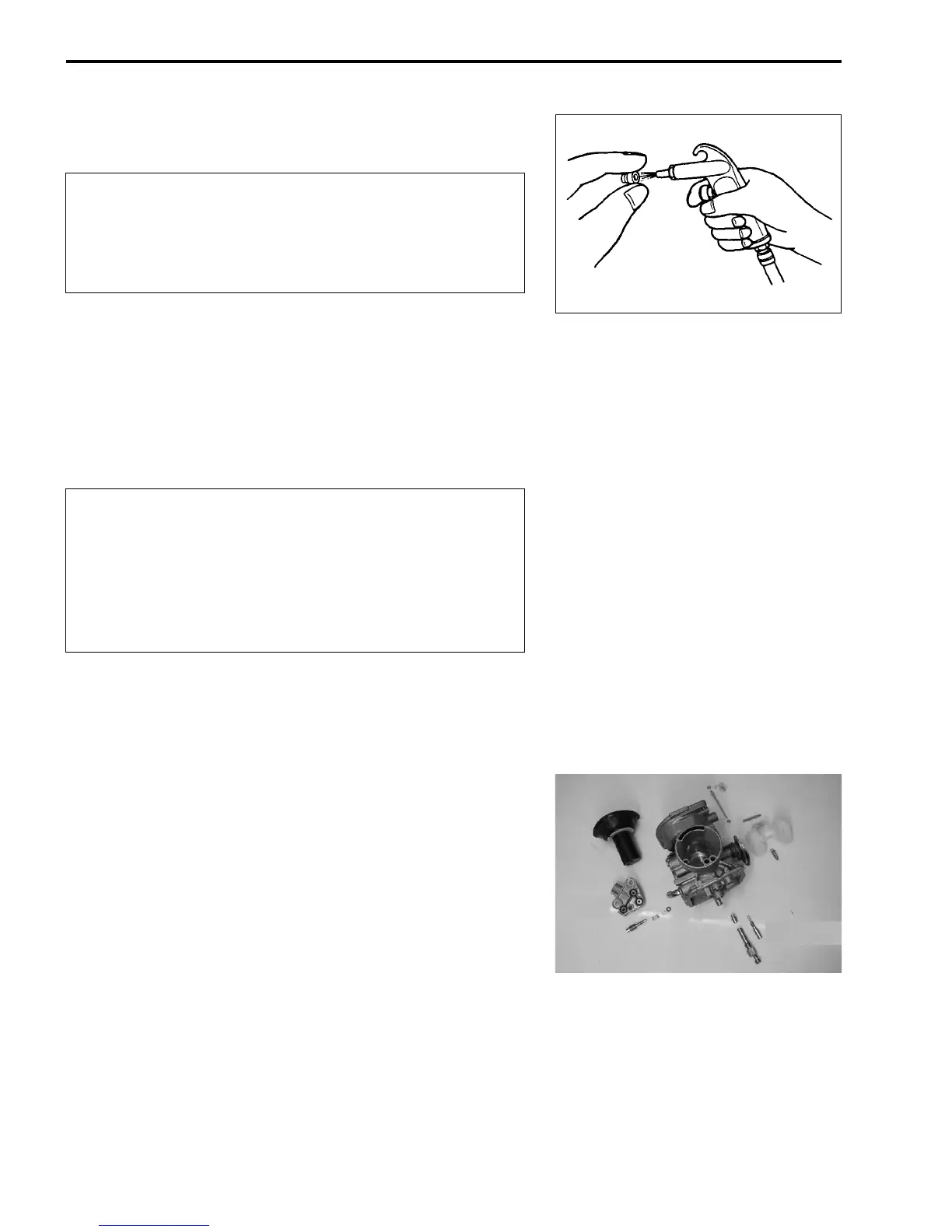4-12 FUEL AND LUBRICATION SYSTEM
CARBURETOR CLEANING
"
• Clean all jets with a spray-type carburetor cleaner and dry
them using compressed air.
• Clean all circuits of the carburetor thoroughly – not just the
perceived problem area. Clean the circuits in the carburetor
body with a spray-type cleaner and allow each circuit to soak,
if necessary, to loosen dirt and varnish. Blow the body dry
using compressed air.
%
• After cleaning, reassemble the carburetor with new O-ring
and gaskets.
CARBURETOR JET INSPECTION
Check the following items for damage or clogging.
* Pilot jet * Needle jet air bleeding hole
* Main jet * Diaphragm
* Main air jet * Pilot outlet and by-pass ports
* Pilot air jet * Float
* Needle valve * Starter passage
* Needle jet * Pilot screw
* Needle jet holder
Some carburetor cleaning chemicals, especially dip-
type soaking solutions, are very corrosive and must
be handled carefully. Always follow the chemical man-
ufacturer’s instructions on proper use, handling and
storage.
Do not use a wire to clean the jets or passageways. A
wire can damage the jets and passageways. If the
components cannot be cleaned with a spray cleaner it
may be necessary to use a dip-type cleaning solution
and allow them to soak. Always follow the chemical
manufacturer’s instructions for proper use and clean-
ing of the carburetor components.

